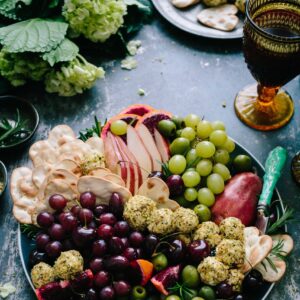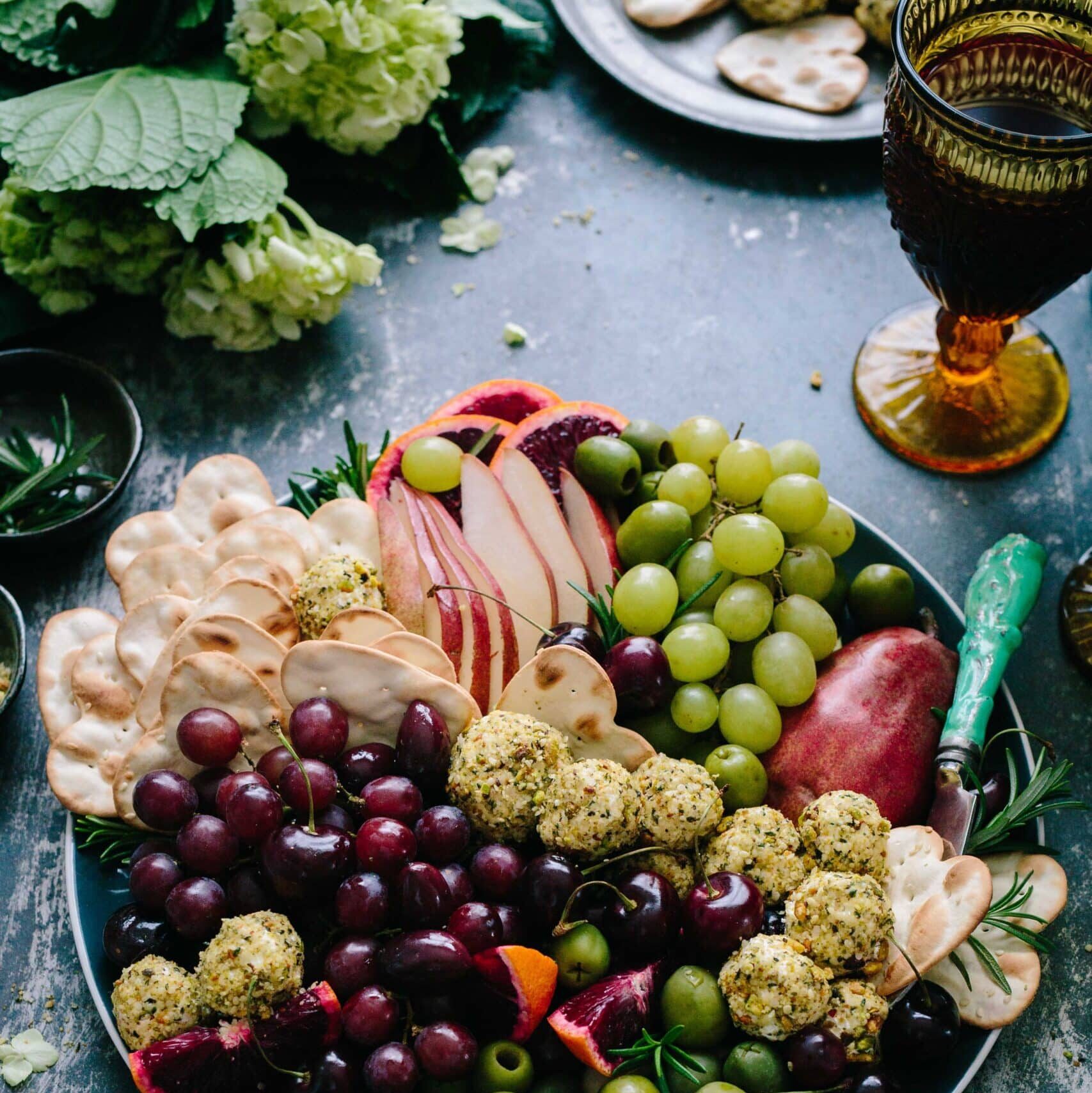Real Food can be a challenge to find and eat in our fast food, processed food culture. Stick with me to find out how to eat healthily and with ease.

The Real Food Challenge
I sometimes felt like an outsider when I brought my lunch to work daily while others ate takeout regularly or went to a restaurant to grab a burger and fries. I felt this same disconnect when it was time for us to come together for many birthday cake gatherings. At first, I avoided these so as not to feel uncomfortable, but then I realized the point of the gathering wasn’t really to eat cake. It was to celebrate the person whose birthday it was. So, I started sitting and chatting with my co-workers, asking the birthday person about their plans for the day and grew comfortable skipping the white sugar and white flour bomb.
I have my occasions for eating out or having a treat, but I know that my regular daily choices make up the vast majority of my food intake and are what matters.
Avoid Decision Fatigue
Having the clear decision already made by me that I am not going to eat office birthday cake as a general rule, for example, frees me from any mind games and decision fatigue. I don’t have to convince myself of it every time, and I feel much lighter about eating. Setting clear eating boundaries for yourself helps make eating healthily easier. You certainly don’t need to be rigid. But freeing yourself from asking whether you should eat something many times a day makes eating more enjoyable. We are confronted consistently throughout the day with fast food advertisements on billboards, television, online, etc., see others eating processed and fake food all the time, drive by fast food restaurants, and stand in the checkout line filled with candy at the grocery store. It takes diligence to choose real food over and over again.
This article aims to reinforce your choice to eat whole, healthy food and make your life with real food easier.
I started eating real food in my late twenties. I had made friends with someone in an exercise class, who I later found was a vegetarian. She was the first vegetarian I ever knew. I still find this astonishing even though I did grow up in the conservative Midwest. Her vegetarianism isn’t the point, but my lack of exposure to other ways of eating is. Seeing her make deliberate food choices based on personal values and needs caused me to consider my mainstream American way of eating. I have never looked back.
Eating real food isn’t about perfection but about making the best choices for our health as often as we can. Sometimes that does mean having a little cake. But, when I eat junk, I try to make it a deliberate, chosen event full of pleasure. Then I move on and get back to my daily menu.
Another Reminder of Why Real Food is a Great Idea
You may know how bad processed food is but read on to remind yourself and cement your real food choices.
Processed foods are often high in sugar, processed salt, oxidized fat, empty calories, and low in fiber and nutrients. They’re also made from cheap ingredients and chemicals that can do us harm. On the other hand, real foods are nutrient-dense, without a lot of sugars, and enhance our health.
The Basics of Processed Foods
There are two very obvious reasons why people choose to eat processed foods instead. First, processed foods are convenient. You can buy them at the grocery store, pop them into a microwave, and heat them without spending much time preparing them. Second, processed foods tend to taste more exciting than real food.
We get this juiced-up feeling from processed foods because manufacturers add chemicals, flavorings, and sweeteners to make processed foods more appealing and addictive.
Their goal is for you to buy more of their product, not feed you nutritiously.
A Few Tips for Making Healthier Choices
It’s hard to break free from the pull of processed foods. Arm yourself with information. Know precisely what processed foods do to your body and the benefits of whole foods.
Understand the Basics of Processing
To understand what processing means, let’s start with the basics. A raw product hasn’t been altered by any kind of treatment. It’s still whole and unprocessed, such as fruits and vegetables, meat, fish, eggs, dairy products, nuts, seeds, grains, and beans.
Processed foods are made up of ingredients that have been treated in some way. They might be refined, bleached, deodorized, enriched, homogenized, hydrogenated, irradiated, pasteurized, pulverized, salted, smoked, sweetened, or transformed in some other way. These treatments alter the original form of the food. These changes affect how well the food works for you.
Recognize Fake Food
The term “fake” is used to describe food that isn’t really food at all. It is a food-like product. Whole food is made/grown by humans, while fake food is created in laboratories. They might be called “edible” or “nutritious,” but they only mimic food. For example: Whipped Topping, Cheez Whiz, Skittles, Bakin’ Bits
Look for the Ingredients List
Ingredients lists help you identify what’s inside the package. I don’t focus on the Nutrition Label; I focus on the ingredients. Look for food with no listed ingredients, for example, an apple. Or look for food that has five or fewer ingredients.
Look for Five or Fewer Ingredients
and
Avoid Anything with Added Sugar
If you see any ingredient listed as “added sugar” on the label, avoid it as much as you can. It’s not just because it has extra calories; sugar is empty calories that provide little nutrition.
Benefits of Whole, Real Foods
The term “whole” refers to foods that haven’t been altered in any way. This includes fruits, vegetables, nuts, seeds, beans, grains, meat, fish and dairy products. Eating whole foods is one of the easiest ways to improve your diet. To live a healthy lifestyle, you must ensure you’re getting enough nutrients.
Whole foods contain all the essential vitamins, minerals, protein, and other nutrients your body needs.
Also, they do not contain chemicals. New chemicals are constantly being added to our food supply and eating real gives you the best chance of avoiding them. This is especially true if you choose organic. And real foods contain more fiber. This makes them easier to digest and helps keep your digestive system healthy.
Where Do I Find Real Food?
For the most part, you will find the best nutrition in your own kitchen. Your own kitchen is where you know exactly where all your food comes from and what ingredients go into your dishes.
How to Stock Your Kitchen
FRIDGE AND FREEZER
Vegetables and Herbs: Fresh, fermented and frozen, organic when possible
Fruit: Fresh and frozen, organic when possible
Seafood: Wild-caught fish and shellfish, low in toxins
Dairy (or Dairy Alternatives): Pasture-raised, whole milk, cheese yogurt, kefir. Dairy alternatives should be additive-free or at least with no carrageenan.
Meat: Pasture-raised beef, chicken, pork, etc
Eggs: Pasture-raised
PANTRY
Fats: Cold-pressed olive oil, coconut oil, avocado oil, sesame oil, walnut oil, pasture-raised butter or ghee
Boxed/canned: Canned vegetables and fruits for a backup to fresh and frozen, canned wild-caught tuna, salmon and anchovies, coconut milk, pasture-raised chicken and beef bone broth
Sweeteners: (in moderation) Raw honey, coconut sugar, maple syrup, stevia, brown rice syrup, barley malt syrup
Flavorings: Dried Herbs and spices, pure vanilla extract, naturally fermented soy sauce, naturally fermented fish sauce (such as Red Boat brand), coconut aminos, cocoa powder, salt (unrefined salt – sea salt, celtic, himalayan etc.)
Vinegar: Raw apple cider vinegar, balsamic vinegar
Grains: Brown or black rice, oat groats or old-fashioned rolled oats, millet, quinoa (and other whole grains), sprouted whole grain flour, whole wheat flour (and other whole grain flours), almond flour, coconut flour
Legumes/Nuts: Canned beans and lentils, dried beans and lentils, nuts and nut butter
Beverages: Filtered water, organic coffee, black tea, green tea, herbal teas
Baking Items: Baking powder, baking soda (aluminum free), organic corn starch, arrowroot powder
Stay calm about this list. No one is perfect with everything. Do what you can and focus on the fantastic, healthy choices you do make.
Real Food from a CSA (Community Supported Agriculture)
Community Supported Agriculture (CSA) is an alternative to buying produce at the grocery store. CSA members pay local farmers upfront for a share of the farm’s harvest and receive a box of seasonal produce every week throughout the growing season. This system allows farmers to grow fresher and better-quality produce than you might find in the supermarket.
Links:
In the stretch between Austin and San Antonio, Texas, where I live, there is a local delivery company called Farmhouse Delivery (farmhousedelivery.com).
For more tips on making eating health easy, check out these:
The Key to Easy Healthy Quick Meals
Healthy Meal Planning Tips for Busy Families
Try the 9 Healthier Habits for a Healthy You Guide to get your health back on track.
Don’t forget to share your favorite posts with friends and family – get the word out about easy healthy eating!
This blog post is for informational and educational purposes only. It is not intended to treat any health condition or to be prescriptive for anyone. Always be sure to work with your healthcare practitioner before making any changes.
Sign up for The Easy Anti-Inflammatory Lifestyle Newsletter here:






